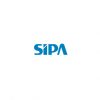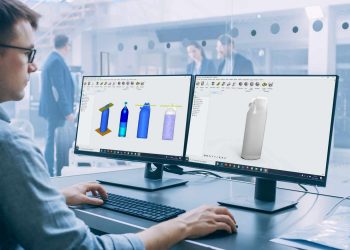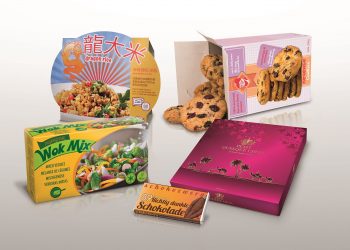PET bottles containing post-consumer recycled material will soon be the norm, not the exception. European Union law says that from 2025, PET beverage bottles will have to contain at least 25 % rPET (calculated as an average for all PET bottles placed on the market within any member state). That figure will rise to 30% from 2030. Similar pieces of legislation are being introduced in other regions of the world too.
- rPET must be clean and consistent
This trend, a response to growing concern about the scale of the global plastics waste problem, presents an important challenge for the entire PET bottle production chain. Containers incorporating rPET will only be accepted by brand owners and consumers if they perform as well as containers made from virgin material. That means rPET arriving at the converter has to be clean and consistent, and with processability during preform injection molding and bottle blowing that is virtually if not exactly the same as virgin PET.
SIPA has been working for a long time now to help ensure that these demands can be met. It now offers a range of solutions that make it possible to make bottles with as much as 100% rPET.
- Xtreme Renew is a radical solution
For example, the joint development between SIPA and Erema on the Xtreme Renew process incorporates ground-breaking technologies that enable rPET to be converted in a fully integrated system directly into injection-compression molded preforms. But this is just one option, and it does require investment in equipment that many converters are unfamiliar with.
- Conventional technology can be good too
So for customers that prefer to venture not so far from their comfort zone, SIPA can supply more conventional XFORM injection molding systems, and SFL or XTRA linear and rotary stretch-blow molding systems, incorporating special features that make processing with rPET a relatively simple affair. In many cases, customers will not even have to invest in new systems, but rather make highly affordable adjustments to equipment they already have. But they will still be able to produce bottles with up to 100% rPET if they so choose (and if the application allows).
- Modified hot runners
For converters producing preforms, for example, it will make a lot of sense to use hot runner systems that have been upgraded to prevent accumulation of PET powder – an issue that can be more of a problem with rPET than it is with virgin PET. SIPA has developed XActive-Cleaning, a system which we describe in a separate article in SIPA SPEAKS.
Cleanliness is an issue not only in hot runner systems, but also in the injection molds that they feed. So SIPA has also been developing ways to keep mold cavities as clean as possible. A system incorporating innovative vacuum technology reduces the need for maintenance and increases line efficiency
- Keep mold air vents open
All molds incorporate tiny vent holes at key points on the surfaces of the cavities, to allow the escape of air in the cavities when the PET is injected. The vents are large enough to allow the air out but small enough to keep the PET in. But the vents can become dirty and blocked if the air flowing through them is not completely clean. It is necessary to take into account the contamination caused by gas coming off from the PET melt, which condenses on the surfaces of the vents.
Stopping production to clean the vents can take several hours. In conventional systems, it may have to be carried out once or twice a week, depending on the application and the resins used.
- System pulls a vacuum before injection
SIPA has patented a solution that pulls the air out of the mold just before injection. In this way, the energy needed to empty the cavity is considerably reduced, while at the same time the blockage of the mold is limited. Net result is that the need for operations to clean the vents is also drastically reduced.
Once the preforms containing rPET have been produced, it is then a question of turning them into bottles. SIPA’s XTRA and SFL systems have both been proven to stretch-blow preforms containing the highest levels of rPET without problem.
- Take rPET color into account when blowing bottles
It has to be said that rPET preforms are not all the same. Because the material is coming from a variety of sources, it is quite possible that there will be, for example, slight variations in color. This may affect behavior when the preforms are heated in infrared ovens, since different colors absorb different amounts of infrared energy. SIPA has developed ways to take account of such variations – making automatic adjustments to the oven settings for example – making it possible to have a very high level of consistency in the way the preforms behave when they are formed into their final blown shape.
Preform heating can be adjusted from one batch of preforms to another, based on the variation in color. Related to this, special vents, known as X-Vents, can be inserted into the molds, making it possible to manage pressure changes in the cavities caused by the process adjustments relating precisely to the different levels of energy absorption of the preforms.
“Any increases or decreases in preform temperature can be balanced by controlled changes in pressure in the cavities,” says SIPA’s Product Manager Blowmolding Systems, “so the specification of any container can always be ensured. The use of X-Vents is particularly useful for managing these situations when bottles with complex geometries are being produced, or for controlling the bases of bottles for carbonated soft drinks.”
Blowmolding Systems Product Manager also points out that the extra wide processing angle on the new generation of XTRA rotary stretch-blow molding machines provides further help in processing ‘difficult’ materials like rPET.
“All in all, we are adding flexibility to the management of preforms and bottles,” he concludes.
With 30 years of experience in PET containers solutions, SIPA has acquired considerable expertise in all available bottle manufacturing and filling technologies, from preforms to finished products, for the food and beverage, chemical products, cosmetics, detergents and pharmaceutical sectors.







